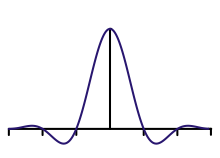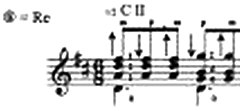Lanczos filter
The Lanczos filter is often used in computer graphics inserted reconstruction filter . It was developed in 1979 by the meteorologist Claude E. Duchon and is named after the Hungarian mathematician Cornelius Lanczos .
The Lanczos filter is defined as a sinc function multiplied by a window function in order to ensure a gradual decrease towards the ends. The window function is itself part of the sinc function. This results in the following definition:
in which
The parameter a determines the size of the wearer and is typically 2 or 3.
Due to the window function, the Lanczos filter leads to less ringing than with a truncated Sinc filter.
A raster graphic enlarged with a box filter (pixel repetition)
literature
- Claude E. Duchon: Lanczos Filtering in One and Two Dimensions. In: Journal of Applied Meteorology. 18, No. 8, 1979, ISSN 0894-8763 , pp. 1016-1022 ( PDF, 460 kB ).
- Matt Pharr, Greg Humphreys: Physically Based Rendering. From theory to implementation . Morgan Kaufmann, London 2004, ISBN 01-2553-180-X , pp. 279-367. ( PDF, 7 MB ).
- Ken Turkowski, Steve Gabriel: Filters for Common Resampling Tasks. In: Andrew Glassner: Graphics Gems I, pp. 147-165. Academic Press, Boston 1990, ISBN 0-12-286165-5




